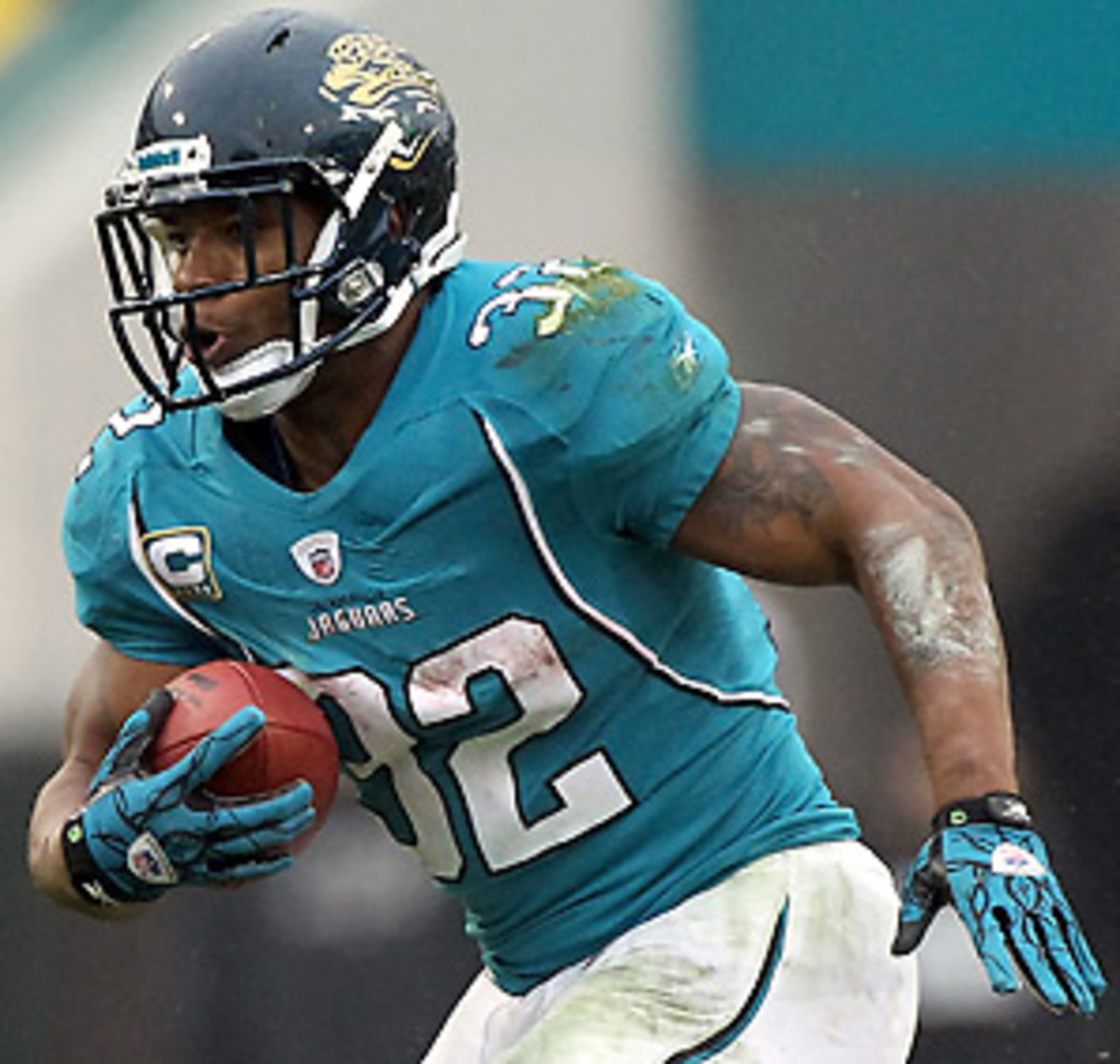Huddle Up: Why Maurice Jones-Drew's holdout is unique

Maurice Jones-Drew has had over 1,600 yards from scrimmage in each of the last three years, including 1,980 in 2011. (Getty Images)

The prevailing storylines underlying Maurice Jones-Drew's decision to skip a mandatory team minicamp -- a decision that will likely cost him $60,000 -- are nothing new. We've been down this road before, with Chris Johnson last season, Matt Forte and Ray Rice this offseason, and any number of other running backs.
The arguments are the same. Running backs want to get paid when they can, because their careers tend to end early and suddenly; teams, meanwhile, don't want to overpay a player at a fragile position.
Here's the difference in the MJD case: Jacksonville already went out of its way to reward its running back, before he even became the dominant player he is today.
Back in 2009, Jones-Drew was set to make $535,000 in the final year of his rookie contract. For his first three seasons with the Jaguars, he had been splitting carries with Fred Taylor, who still stands as the franchise's all-time leading rusher. But with Taylor due to make $6 million at 33, Jacksonville cut him and turned its running back duties fully over to Jones-Drew.
To reaffirm their commitment, the Jaguars also handed him a five-year, $30.95 million contract that, at the time, made him the third-highest-paid back in the league. That investment proved to be a wise one, as Jones-Drew went on to put up 4,321 yards rushing, 130 catches and 34 touchdowns over the first three years of that deal.
MJD believes his performance from 2009-11 entitles him to another redone deal, and a running back market that has seen Johnson take home a $53.5 million extension and Adrian Peterson get $100 million with $36 million guaranteed might help make his case.
Aside from getting a happy and very rich Jones-Drew into minicamp, though, what exactly is Jacksonville's motivation to meet its running back's demands right now?
Jones-Drew is already under contract for $4.45 million in 2012 and $4.95 in 2013. He was, without question, the Jaguars' best player last season, putting up more than 1,600 yards rushing despite terrible QB play, but he also carried the ball 343 times and picked up 43 receptions -- a total of 386 touches. That's on top of 333 combined touches in 2010 and 365 in 2009. If the Jaguars have concerns that Jones-Drew can hold up over the life of a reworked, long-term deal, they have the numbers to support that argument.
Jaguars GM Gene Smith told The Florida Times-Union's Tania Ganguli on Monday that he doesn't plan to budge in this standoff.
“He has expressed that he would like to renegotiate and we have expressed, again, that we feel he has a contract with two years left and we expect him to fulfill those obligations," Smith said.
Things could get even uglier for the Jaguars' anemic offense without Jones-Drew, but let's not forget that this was a 5-11 team in 2011 and has not finished above .500 since 2007, one season before Taylor's last with the team.
You can't pin very much -- if any -- of that on Jones-Drew, who has done just about everything asked of him, but let's not pretend an MJD holdout would keep Jacksonville from getting to the Super Bowl.
It's hard to come down on the side of ownership in these situations since teams very, very frequently cut players loose before they reach the ends of their contracts. If Jones-Drew plays out this season under his current deal but gets hurt in, say, Week 16, misses next summer's camp and the Jaguars bring in another running back, then he could find himself in the same spot Taylor did just a few years ago.
But there's something to be said for Jacksonville's approach in this situation. The Jaguars didn't force Jones-Drew to play under the franchise tag or lock him into an unfair long-term contract.
